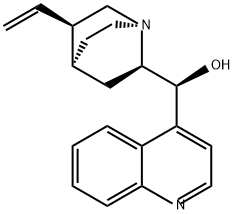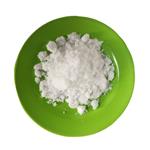Cinchonine is a cinchona alkaloid generally found in the bark of Cinchona officinalis plants. It is a pseudoenantiomer that is commonly employed in malaria therapy. Cinchonine is also used as an organocatalyst in many asymmetric reactions. It is a stereoisomer and pseudo-enantiomer of cinchonidine. It is structurally similar to quinine, an antimalarial drug.
white to light yellow crystal powde
Stereomeric with Cinchonidine (C441925). Antimalarial.
Cinchonine occurs in most varieties of cinchonabark (Cinchona micrantha and Rubiaceae).It is used as an antimalarial agent.
ChEBI: Cinchonan in which a hydrogen at position 9 is substituted by hydroxy (S configuration). It occurs in the bark of most varieties of Cinchona shrubs, and is frequently used for directing chirality in asymmetric synthesis.
The toxic effects from high doses of cinchonineinclude tinnitus, vomiting, diarrhea, andfever. The toxic effects noted in rats were excitement, change in motor activity, andconvulsions. An intraperitoneal LD50 valuein rats is 152 mg/kg.
Flammability and Explosibility
Non flammable
Crystallise cinchonine from EtOH or diethyl ether. For the N-benzylcinchoninium chloride see above entry in this section. [Rabe Justus Liebigs Ann Chem 365 366, 371 1909, Beilstein 23 III/IV 2819, 2832.]



